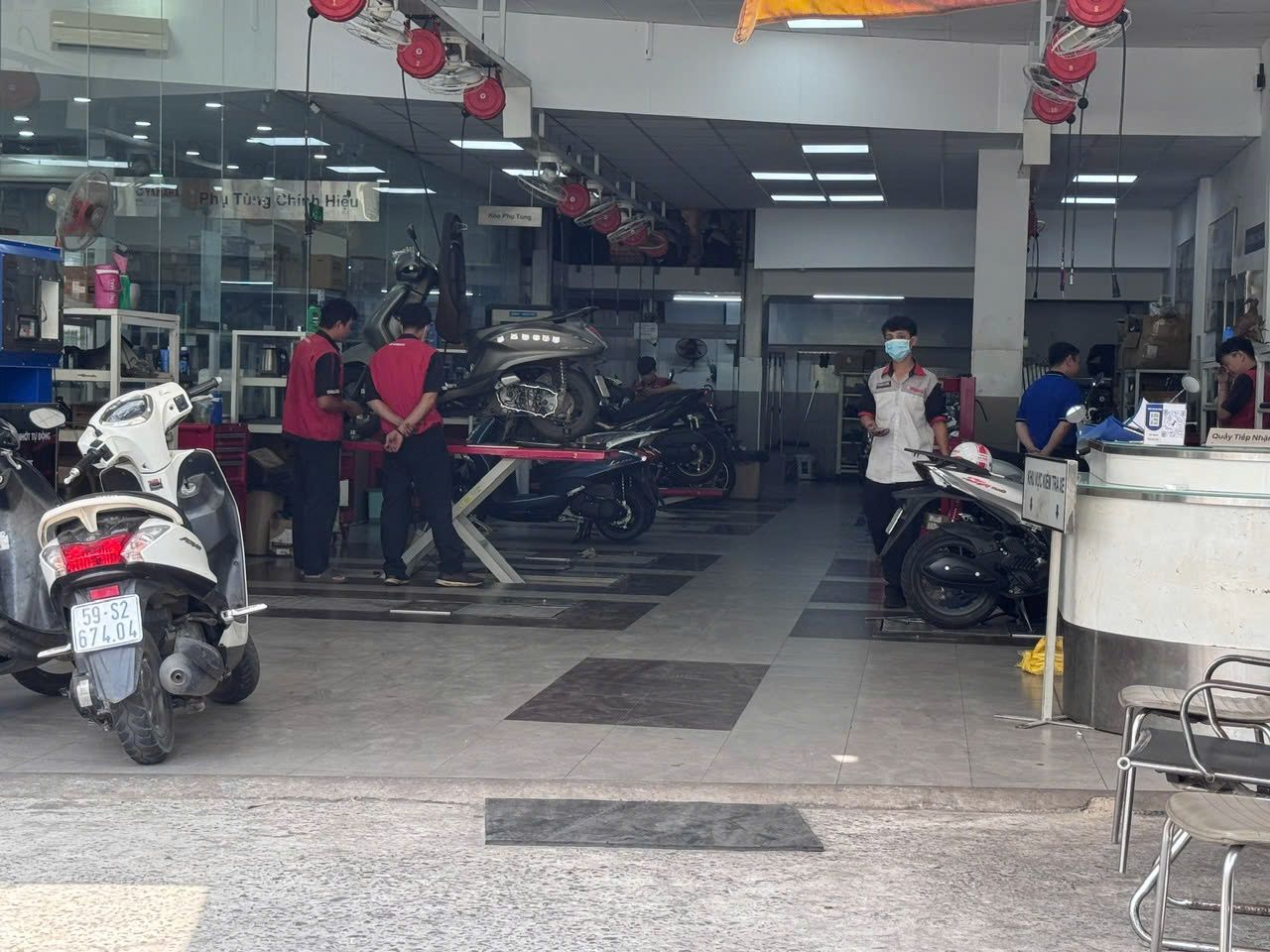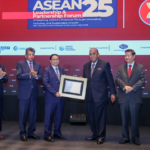Upcoming Emission Standards for Motorcycles and Scooters in Vietnam
The Ministry of Agriculture and Environment is developing a draft roadmap for the implementation of national technical regulations on motorcycle and scooter emissions in the country.
Concerns and Considerations
According to the draft, the timeline for the initiation of emission inspections for motorcycles and scooters in Hanoi and Ho Chi Minh City is set for January 1, 2027. For the four other centrally-governed cities, including Hai Phong, Da Nang, Can Tho, and Hue, the regulations will come into effect on January 1, 2028. The remaining localities will commence emission inspections from the beginning of 2030 or earlier, depending on the actual situation.
The draft clearly specifies that motorcycles manufactured before 2008 will adhere to emission standard level 1, while those produced from 2008 to 2016 will follow level 2. Motorcycles manufactured from 2017 to June 30, 2026, will comply with level 3, and those produced after July 1, 2026, will meet level 4 standards. Regarding scooters, those produced before 2016 will follow level 1 standards, while those manufactured from 2017 to June 30, 2027, will adhere to level 2, and those produced from July 2027 onwards will meet level 4 standards.
Hanoi and Ho Chi Minh City, the two largest cities, will enforce the most stringent emission regulations. Specifically, from January 1, 2032, all motorcycles and scooters operating in these two cities must meet emission standards from level 2 and above. Additionally, motorcycles and scooters entering Hanoi’s low-emission area as stipulated in the Capital Law must comply with the emission standards set by the People’s Council resolutions.
The Ministry of Agriculture and Environment’s draft has received support due to the increasing environmental pollution caused by a significant number of old and unlicensed vehicles still in operation, which negatively impacts the health of urban residents. However, there are also suggestions to consider allowing some older vehicles to continue operating if they meet emission standards through proper maintenance.
Mr. Truong Gia Hien from Thu Duc City, Ho Chi Minh City, purchased a Honda motorcycle in 2015, which is still in good condition due to proper maintenance. However, according to the regulations, by 2032 – when the vehicle is 18 years old – it will no longer be permitted for use in Ho Chi Minh City. Similarly, Ms. Ngo Kim Yen from District 6, Ho Chi Minh City, has been using a Cub 84 motorcycle since 2000. This model is considered “dead” and has been discarded in foreign countries, but it still functions well due to minimal usage. If not allowed to use their vehicles due to non-compliant emissions, many owners will have to sell them at a loss or discard them altogether.

Dealerships of motorcycle manufacturers will participate in emission inspections.
Clear Fuel Standards are Essential
According to Associate Professor Dr. Do Van Dung from Ho Chi Minh City University of Technical Education, it is crucial not only for scooters to meet emission standards but also for the fuel used in these vehicles to be appropriate to effectively protect the environment. The Ministry of Industry and Trade is responsible for ensuring the supply of suitable fuel for vehicles, but specific standards and types of fuel, such as biofuel or low-sulfur gasoline, have not been clearly defined. “It is necessary to stipulate Euro 4 and Euro 5 fuel standards corresponding to the emission levels and ensure fuel prices that encourage people to use standard-compliant fuel,” said Dr. Dung.
Regarding feasibility and social impact, Associate Professor Dr. Do Van Dung suggests that emission inspections will increase costs for citizens, especially those using older vehicles or residing in rural areas. Therefore, he proposes considering fee exemptions or reductions for emission inspections for low-income households and owners of older vehicles during the initial implementation phase (2027-2030). One possible solution is to develop a program for trading in old vehicles and providing subsidies for purchasing new, emission-compliant vehicles in collaboration with motorcycle manufacturers.
Another point of concern raised by experts is the draft’s lack of clarity on measures to address vehicles that do not meet emission standards, which could lead to confusion during enforcement. Dr. Dung recommends establishing specific regulations on penalties (fines or vehicle impoundment) and corrective procedures (repairs and re-inspections). Additionally, he suggests implementing incentives, such as reduced registration fees for vehicles that meet standards from the first inspection. “Consider a long-term roadmap beyond 2032 with higher emission standards, such as level 5, to ensure sustainability. Integrating emission inspection data into mobile applications or electronic registration systems can also help citizens easily track inspection schedules and results,” Dr. Dung added.
Mr. Dinh Trong Khang, Deputy Director of the Environmental Specialty Institute under the Institute of Science and Technology for Transport, noted that many countries worldwide have been controlling motorcycle emissions for years. Vietnam has a vast number of motorcycles on the road, including those with lifespans of several decades, contributing to environmental pollution. The proposed roadmap in the draft allows vehicles that do not meet the required emission standards for urban and major cities to be circulated in other localities, reducing economic impacts on citizens. However, a concerning issue is the lack of sufficient inspection facilities for tens of millions of motorcycles and scooters, requiring the mobilization of social resources.
Significant Investment Needed for Inspection Stations
The Vietnam Motorcycle Manufacturers Association (VAMM) considers the phased implementation roadmap in the draft to be appropriate. VAMM pledges to collaborate in implementing emission inspection regulations by engaging the dealerships of motorcycle manufacturers as inspection facilities.
However, VAMM dealerships require a minimum of one and a half to two years to prepare the necessary resources and infrastructure. The Hanoi and Ho Chi Minh City dealerships can be ready by early 2027. It is estimated that 3,971 inspection stations are needed nationwide to meet the demand for motorcycle and scooter emission inspections, including the construction of 2,203 new stations. If the investment cost for one station is 400 million VND, the total cost for 3,971 stations would be approximately 1,588 billion VND.
“Prime Minister Calls on Businesses to Embrace Their Role as Connectors Within ASEAN and Between Vietnam and Malaysia.”
On the morning of May 25, as part of his working visit to Malaysia, Prime Minister Pham Minh Chinh attended a program titled “Meet Vietnam-Malaysia Businesses.” The event was organized by the Ministry of Finance of Vietnam, in collaboration with the Embassy of Vietnam in Malaysia and the Malaysian Chamber of Commerce and Industry.
Aim High: Vietnam Targets Robust Growth Amid Global Slowdown
“During a discussion with National Assembly delegates on the morning of May 23, Prime Minister Pham Minh Chinh shared insights on the tasks and solutions to achieve high economic growth targets amidst a global backdrop of downgraded forecasts. He emphasized three strategic breakthroughs, the implementation of four key pillars, and a strong focus on decentralization and empowerment. The government aims to transform its service delivery to better serve citizens and businesses, drastically reduce red tape, and shift from pre-inspection to post-inspection. These efforts are complemented by a focus on planning and standard-setting to drive sustainable growth and development.”
“Premier Pham Minh Chinh Named Outstanding ASEAN Leader 2025”
On May 25, in Kuala Lumpur, as part of his official visit to Malaysia and attendance at the 46th ASEAN Summit, Prime Minister Pham Minh Chinh participated in the ASEAN Leadership and Partnership Forum. At this event, the Asia-Pacific Strategic Research Institute (KSI) honored him as the Outstanding ASEAN Leader of the Year 2025 – a recognition of Vietnam’s significant contributions to the region’s development process.





















